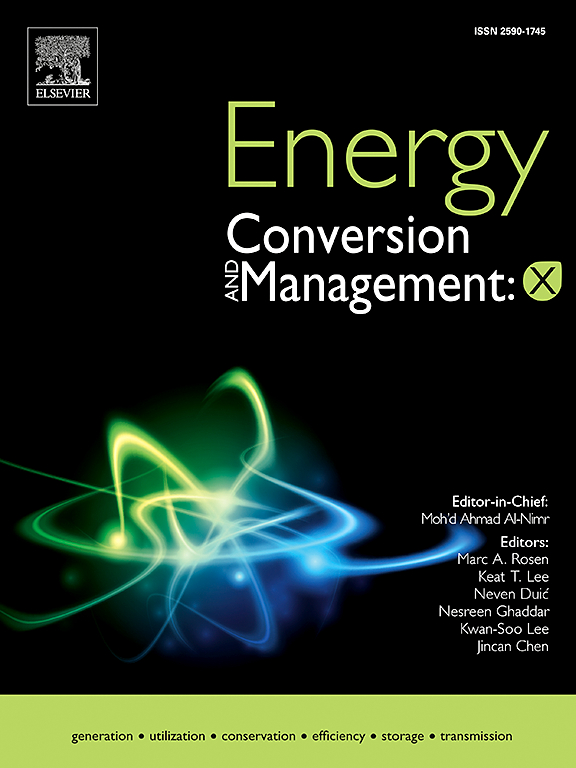Enhancing shallow geothermal wells via Time-Dependent modeling and bucket space approximation
IF 7.1
Q1 ENERGY & FUELS
引用次数: 0
Abstract
Geothermal energy is a clean, sustainable resource, yet efficiency challenges such as reservoir thermal depletion and short-circuiting in shallow closed-loop wells limit the performance of geothermal systems. The high computational cost of transient numerical models further complicates performance optimization, making it difficult to assess and improve system efficiency. To address this, a Bucket Space Approximation is introduced as a novel simplification method that preserves thermal effects while significantly reducing computational costs. A two-dimensional, 100-meter-deep, axisymmetric geothermal well model was simulated for 30 years using the finite element method and validated against analytical benchmarks and Distributed Thermal Response Test data. Sensitivity analyses examined grout thermal conductivity, tubing air–gap dimensions, and weather-dependent fluid flow rates. The results show that grout thermal conductivity consistently improves well performance, while seasonally adaptive operational strategies optimize efficiency. In winter, higher fluid flow rates enhance heating performance, whereas in summer, lower flow rates minimize pumping power while maintaining cooling efficiency. Under mid-weather conditions, increasing flow rates reduces the effectiveness of tubing air-gaps, requiring careful adjustments. The inclusion of a tubing air–gap generally improved performance, with an optimal thickness of 1.6 mm and a length of 60 m. This study presents a computationally efficient approach to enhance geothermal well performance while reducing modeling constraints. The findings contribute to improving system efficiency, expanding the applicability of closed-loop geothermal wells, and guiding future research on integrating novel materials with adaptive thermal properties, heterogeneous geological conditions, and incorporating dynamic weather conditions.
求助全文
约1分钟内获得全文
求助全文
来源期刊

Energy Conversion and Management-X
Multiple-
CiteScore
8.80
自引率
3.20%
发文量
180
审稿时长
58 days
期刊介绍:
Energy Conversion and Management: X is the open access extension of the reputable journal Energy Conversion and Management, serving as a platform for interdisciplinary research on a wide array of critical energy subjects. The journal is dedicated to publishing original contributions and in-depth technical review articles that present groundbreaking research on topics spanning energy generation, utilization, conversion, storage, transmission, conservation, management, and sustainability.
The scope of Energy Conversion and Management: X encompasses various forms of energy, including mechanical, thermal, nuclear, chemical, electromagnetic, magnetic, and electric energy. It addresses all known energy resources, highlighting both conventional sources like fossil fuels and nuclear power, as well as renewable resources such as solar, biomass, hydro, wind, geothermal, and ocean energy.
 求助内容:
求助内容: 应助结果提醒方式:
应助结果提醒方式:


